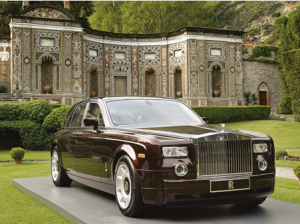News
Latest Lion Aid News
Rhino horn is not medicine
Monday 10th September 2012
|
A number of rhino conservation organizations have adopted the above motto. Traditional Chinese Medicine practitioners have been urged to distance themselves from the purported value of rhino horn to relieve a number of symptoms, and we have all heard that rhino horn is just keratin – about as supposedly effective in curing ills as chewing on your fingernails. But actually and increasingly rhino horn is not being used as medicine. Rather it has become a status symbol to show off wealth and affluence. And status symbols actually drive wildlife trade to a very great extent. Conservation organizations now alert us that rhino horn represents an investment opportunity – buy it and wait to sell it when the price is right. We are all aware of status symbols and what I will call the show-off factor. People with wealth do not drive a Subaru or a Ford or a Honda. They drive Ferraris and Maseratis and Rolls Royces. They do not serve wines or champagnes that are not vintage and very expensive. They do not fly in economy class as they have private jets. In China they serve tiger bone wine that is seven times more expensive than Johnny Walker Blue Label whisky. We measure wealth by visible displays. Displays of wealth have long been associated with wildlife products. Historically, ivory has been expensive – white gold – and ivory has always had a show-off factor. It might also amaze some of you that in the 1960’s, rhino horn was worth about $25 per kilo. Now it seems it is worth $65,000 or more. This is because a new affluence is present among Asian consumers, and I strongly believe that while rhino horn might still have some importance in Traditional Chinese Medicine, it is probably now too expensive for the average person who believes it cures a few ills. More and more reports are emerging that it is now added to drinks at affluent parties (and then used again as a hangover cure). Apart from ivory and rhino horn, other species are also involved in the affluence-driven trade. In the United Arab Emirates, pet cheetahs and lions are the rage. They are expensive to buy, so the show-off factor comes into play again. Only the very wealthy in Europe, so therefore nobility, were able to maintain private menageries in the 17th and 18th Centuries – and were presented with exotic animals as royal gifts. Trophy hunting is a “sport” of the wealthy (hunting lions in ancient Mesopotamia was the sole right of kings) and trophy rooms these days are a show-off factor – the more leopards, lions, rhinos and elephant tusks decorating the wall the more bragging rights you have. And those bragging rights go up when you display rare and endangered species… And then of course there is the show-off factor of having an alligator skin purse, a pair of python skin boots, and a leopard skin coat. The point here is this. Wildlife products have always been associated with a show-off factor. Just as owning a Rolls Royce and a Lear Jet tells everyone that you are affluent (and by extension more important than the average Joe), ivory, rhino horn, tiger and lion products etc send the same message. If we are dealing with a show-off factor by the wealthy, the wildlife trade will not easily cease. Yes, those people should know better as they tend to be more educated than the average Joe, but they might not care very much. A status symbol is exactly that, and will require much more than education to enlighten the wealthy consumers as to effects of their actions. Just try telling a millionaire to drive a Honda rather than a Porsche because the Honda might be more environmentally friendly? Picture credit: http://www.carsvw.com/2012/05/the-greatest-cars-of-rock-and-roll/rolls-royce/ Tags: lions, cheetahs, UAE, Traditional Chinese Medicine, rhinos, ivory, keratin, Categories: Traditional Medicine, Illegal Wildlife Trade |
Posted by Pieter Kat at 12:01
No comments have been posted yet.
Add a new comment
Existing user
New user sign up




